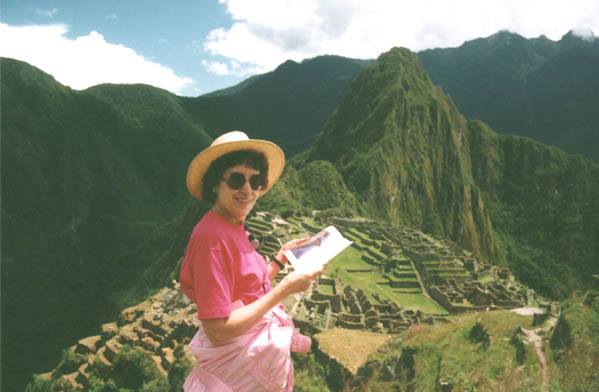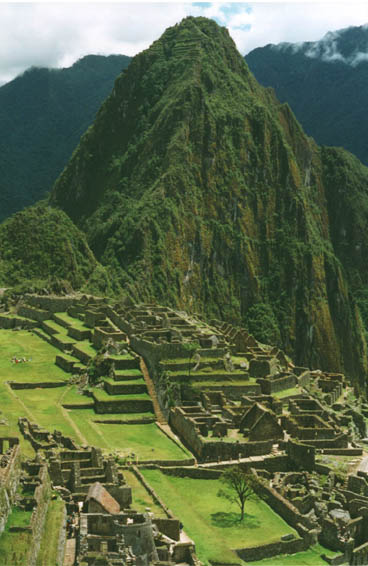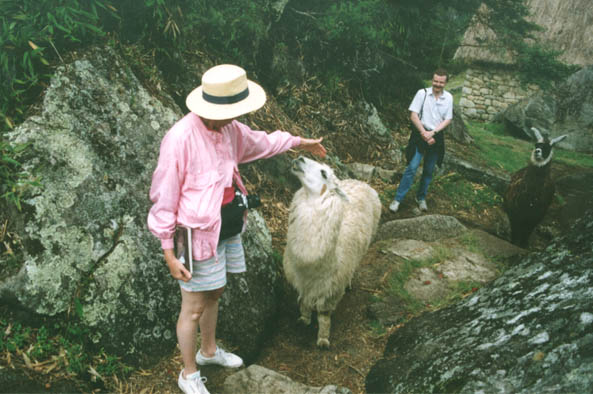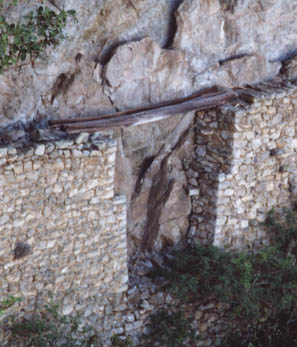Machu Picchu
March, 1990

Precisely crafted terraces line the slopes below the ancient city of Machu Picchu. This is called the agricultural sector and the houses in the distance are presumed to be those of the caretakers of the terraces.


| This wall detail shows the remarkable mortar-free masonry of these ancient Inca craftsmen. Actually, the guide books say they used clay mortar, but none is evident here. The image above shows other examples of the stone structures. The city of attached houses, terraces, ramps is completely constructed of stone. In some places the thatched roofs have been reconstructed to show the best understanding of the original form of the buildings. |

| Looking to the valley and Urubamba River below gives some idea of the precipitous setting of this finely crafted town on the mountaintop. |


| Brenda looks down on the crafted stone city, but then up to narrow terraces hanging near the peak of a steep cliff. Have a look at the small terraces near the peak above the city and think about how you would get up to the fields to work the crops every day. You would need the agility of a mountain goat. Back in the hills of Arkansas where I grew up, there were lots of bad jokes about people "falling out of the corn patch" on those relatively steep hillsides. But here it is a literal possibility! The guidebook describes a viewpoint up at the top which is called Huayna Picchu. It says that it takes an hour to get there but that it is an excellent place to see the sun rise. But that means you would have to go up that steep one-hour trail in the dark! |

Along the path through Machu Picchu were friendly llamas. These two animals followed them on most of their walking tour of the ruins. Brenda petted this one, but it was probably looking for a handout.

This is a backward view of the road they took up to Machu Picchu from the village below. Brenda, Sherry and Brenda Andrade walked up this road from the valley. This is called the Hiram Bingham Road after the discoverer of the city. His last trip to the area was in 1948 at the dedication of the road. From the bridge across the Urubamba it is five miles long.

| As a final scary thought about how these people lived, have a look at the narrow stone pathway leading around this high sheer cliff. You can see the setting of the pathway by looking near the bottom of the image at left. Then consider trying to cross the gap on this pathway on an unanchored log. It took a brave people to live on these cliffs!  |
One of the guide books says that this log-bridged gap was a designed defensive barrier. If pursued, they could pull the log bridge over behind them to create a barrier for their pursuers.
| Back to Machu Picchu entry point |
| Back to beginning of Peru trip |
| RA Racer Derby |
1990